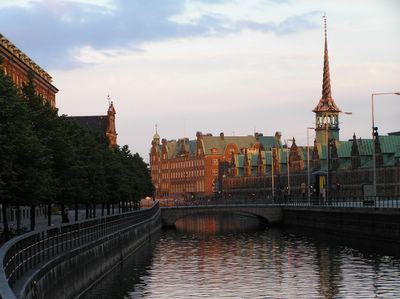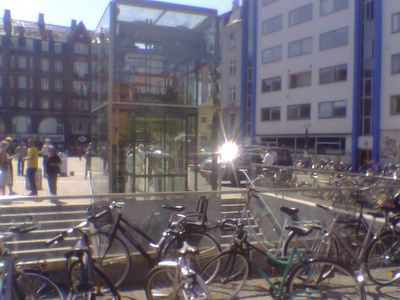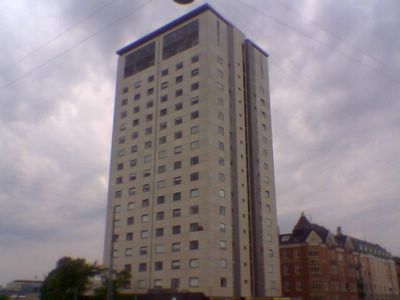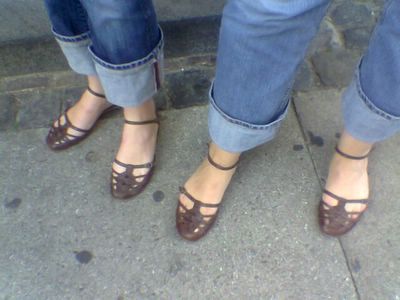Closing Time In Copenhagen (Part 2) - The Housing Situation
by Tim Anderson (timothyanderson2005@gmail.com)
This is the second installment of a series of articles about life in Copenhagen, knowing that August is my last month living here for some time. The first one is Closing Time In Copenhagen (Part 1).
I look out the window of my apartment, down to the quiet cobblestone street below, feeling that where I am is a place distinctly Europe – old Europe, stereotypical Europe. In fact, where I live is not that old by such standards – the apartments around here are generally in the area of 100 years old, though there are certainly some that are much older. In certain respects, the ones on my street in Christianshavn even seem quite modern.
A friend of mine living right in the dead centre of town, no more than a 15 to 20 minute walk from my place (see how far that will take you in London) lives in a building nearly 200 years old that is built on 500 year old foundations. It looks it. Every now and then he asks me what I think the chances are that a building like that could suddenly become unstable – essentially crumble without much warning to a state beyond repair. He loves the place, but nonetheless has some genuine concern for the security of his investment - since he bought the apartment. I personally don’t think it is too likely to happen, but then again it’s not my bank loan on the line, so I'm probably not seeing it as he is. Why should I be worried?
There has been for sale signs in the windows of two apartments just across the street from ours for some time now – several months. Looking out at them just now, I see a sold sign has been pasted over one of them, though the other still remains. It’s about time. It has surprised me how long these two have been listed for sale since the housing market around here (all over Copenhagen) has been moving at more than a brisk pace. Rather, prices have been exploding over the past two years, and at a far greater rate than the official statistics suggest.
Various friends of mine, ones that had the good sense to buy an apartment at some point over the last years, have made more money during this time by selling their apartments or re-mortgaging them to take advantage of their increase in market value (and lower interest rates) then they have in salary. This is something endlessly frustrating for those not quite in a position to buy during this time (myself) or who (foolishly?) opted to rent and are now left pondering why they made this choice.
In fact, the housing market has been behaving in this manner for several years now, and shows few signs of stopping. The number of apartments available for sale in Copenhagen is at an all time low, as are interest rates (which at least makes loans more affordable than ever at the moment) which has consequently been driving prices up, up, up. Trying to find a decent place in central Copenhagen (that matches ones reasonable desires) on a first-or-second job after graduation type of salary is proving increasingly challenging.
Still, I know that this price appreciation simply cannot be sustained for that much longer – which does not at all mean that prices will suddenly drop. Of course they could – a few signs of greed are starting to show, always an ominous sign.
Just the other day, a story came out about a real estate agent who had been selling numerous contracts over the last months for reservations on apartments (over 100) in a new building development being finished shortly. She also happened to be one of the investors in the development. Because prices have shot up so dramatically since the reservations were first taken, the development board (of which she is a member) opted to (legally) cancel every one of them. In this way they could re-price the apartment units at a higher level – more money.
Such behaviour clearly strains the bonds of trust between client and customers, no question. On this scale where so many people are affected, it also suggests a brazen confidence, if not a possibly deluded overconfidence, in a market capable of producing an endless stream of customers willing to overlook such questionable tactics and accept whatever terms are on offer just for the chance to buy. Similar behaviour has lead to the demise of many a business in the past, even ones seemingly infallible, and it tends to reach it’s zenith just before an economic collapse of one sort or the other. Let’s see what happens.
The housing situation in Copenhagen is complex, to say the least, and not one that is easy for a foreigner to get a handle on.
On the more understandable side of things are the literally countless tens of thousands of generic two room apartments everywhere in the city. Somehow over the years, the layout of these apartments has come to be a sort of defacto-standard for what could be termed, ‘the two-room Copenhagen apartment’.
When one sees an advertisement with the words, ‘two room apartment’ accompanied by a measurement of around 50 to 60 sq metres, one can make a pretty solid guess at what the apartment looks like - a fair sized room at the front, a second smaller room for a bedroom looking out into the back garden, and beside this a small kitchen and tiny bathroom (with a shower practically hanging over the toilet and certainly no bathtub!).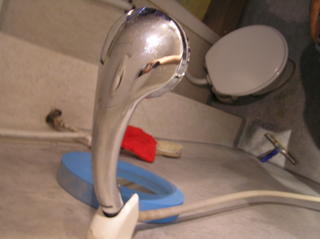
All that remains is to ascertain the apartments precise location, how big are the windows are/how bright the apartment is, and if it needs painting.
Most apartments have accesss to a large shared garden out back for the up to 200 or more apartments overlooking it. This garden may be more or less sunny and usable, depending upon it's state of repair, and the amount of space between the buildings.
In the case of our most recent apartment, the back garden was just beautifully refurbished thanks to a government fund which is earmarked for such projects that footed the entire bill. Again, the wonders of living in a socialist country. At one end the buildings were quite close together, while at the other (our end) there was quite some space - which meant it was not as easy to watch what the neighbours were up to, something I always enjoy doing.
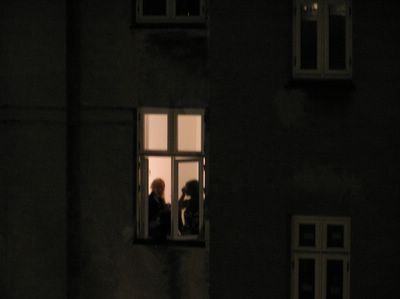
The monthly student (non-repayable) grants paid by the Danish government to all students in Denmark for up to six years of studies are perfect for renting one of these (or buying them as an andels apartment, which I will talk about shortly) with a friend, girlfriend or boyfriend – which is a very attractive proposition for a couple in love. Oftentimes, this is exactly what happens.
Moving into such a two-bedroom place is hardly a lifetime commitment, since they are certainly not big enough for very long once kids enter into the picture. Equally, it makes the process of splitting up and moving on, if it should ever come to that (and as statistics go, the odds are that it will) just as easy – they are highly sellable (or rentable). So there is a steady turnover of these places.
On the other side of things, is the peculiar form of ownership known in Danish as ‘andels’ apartments. There really isn’t an English equivalent (or translation) for this, so I will describe what they are instead. There are literally tens of thousands of these apartments all over Copenhagen (and the rest of Denmark).
These could loosely be described as collectively owned apartment blocks, each managed by an organisation that control the purchase and sales of the rights to live in the apartments within their block(s), and that decides the amount of the monthly rental-type fee that will be paid as well.
The thing is, the prices of the shares (ie. right to live) that one of these andels apartments gets bought and sold for by no means corresponds with their market value if they were being bought and sold on the private market. It is the board of each andels, consisting of residents living there, that dictate the prices for each. So the prices do move over time, just much more slowly than the market. As a rule, they are ludicrously cheaper to live in (by Copenhagen standards) often costing half as much as the monthly outlay for an equivalent privately owned apartment. If you’re lucky enough to get your hands on one. This is the other issue.
Without connections (typically close family, friends or work colleagues) or good foresight from your parents (more on this shortly), the waiting lists for these places range from 3 to 15 years. It’s a bit like playing a lottery that comes with a guarantee that you will win big eventually, at some indefinite point in your life, if you are willing (and able) to wait.
In many instances Danish parents put the children on an ‘inactive’ waiting list for one or more andels organisations when they are small, which means that when they are 18 and ready to move away from home, they will have the right to be put on the ‘active’ waiting list, which will typically be anywhere from 2 to 5 years long in itself. Eventually, they will begin to be offered the chance to purchase the rights to live in various andels apartments. One can only hope their parents have thought of doing this.
If all of this seems like it would be extremely bizarre for an outsider coming to live in the country to understand, it absolutely is.
The problem with this system as it stands is that it greatly distorts an already overheating housing market (pushing privately owned apartment prices up higher than they should be), while only offering benefits that can at best be described as unevenly dispersed. Because a board decides the purchase and sales prices of andels apartments, there is no free market operating here. And there are so many, many, many of them in Copenhagen, so it is an issue.
Rather, it could be suggested that this is an example of radical socialism at it’s most random. Regardless, it is a system that is unique, distinctly Danish, and has a significant influence on life in Copenhagen. No question about it. I don't expect that the housing market is something that I will miss very much when I leave.
But housing is hardly the only thing worth discussing, so read on. Coming shortly, Part 3.
 RSS Feed
RSS Feed  Twitter
Twitter 